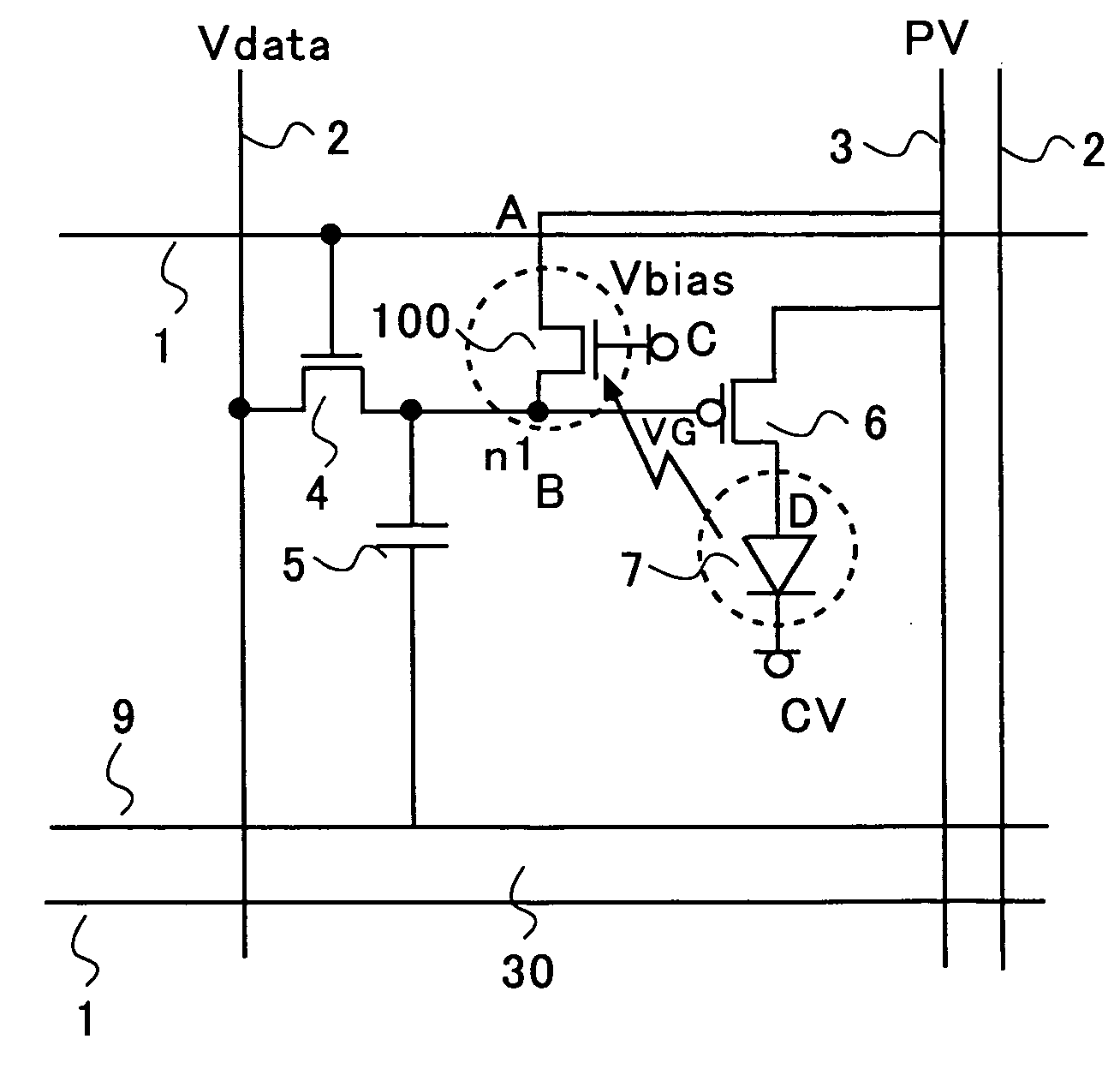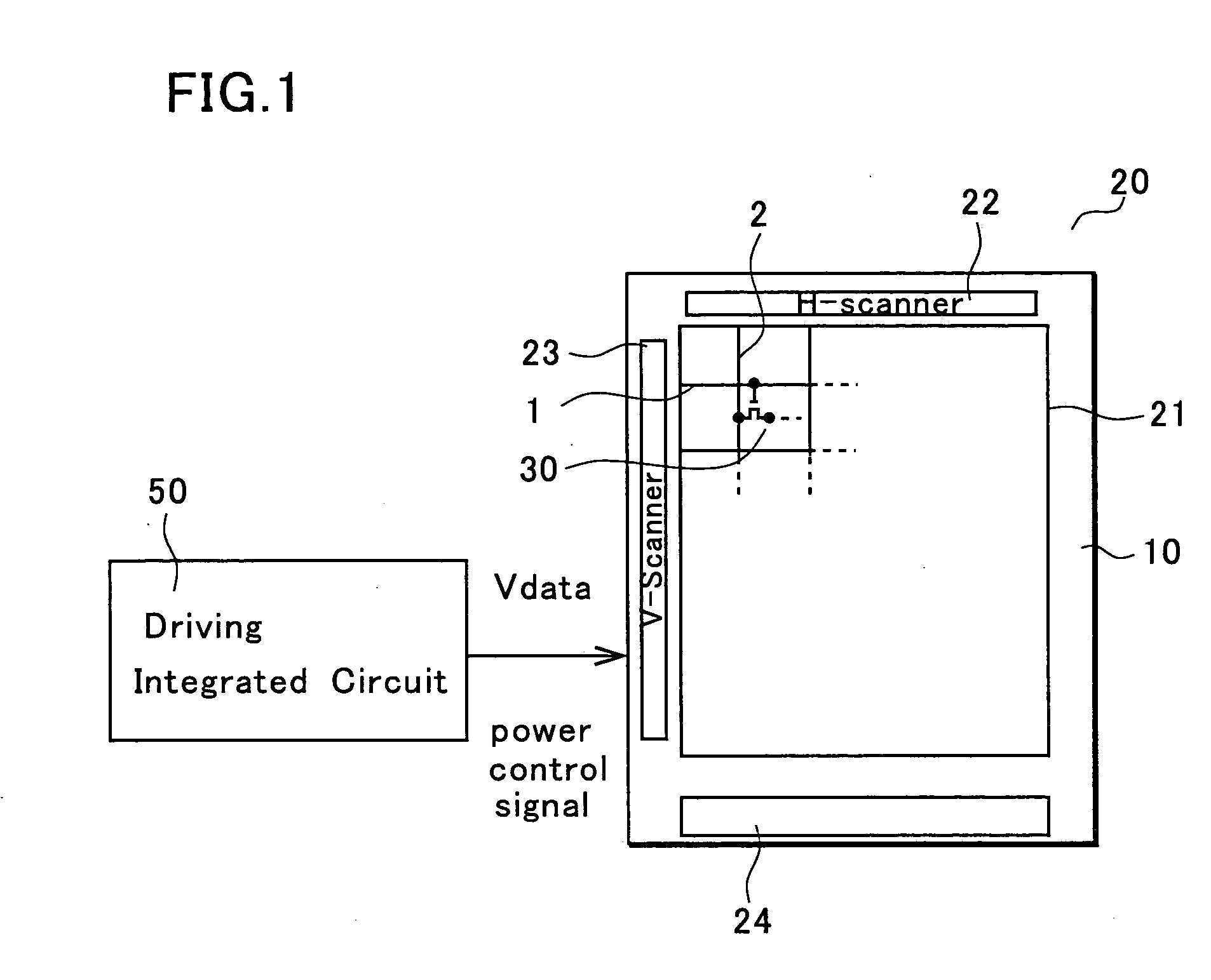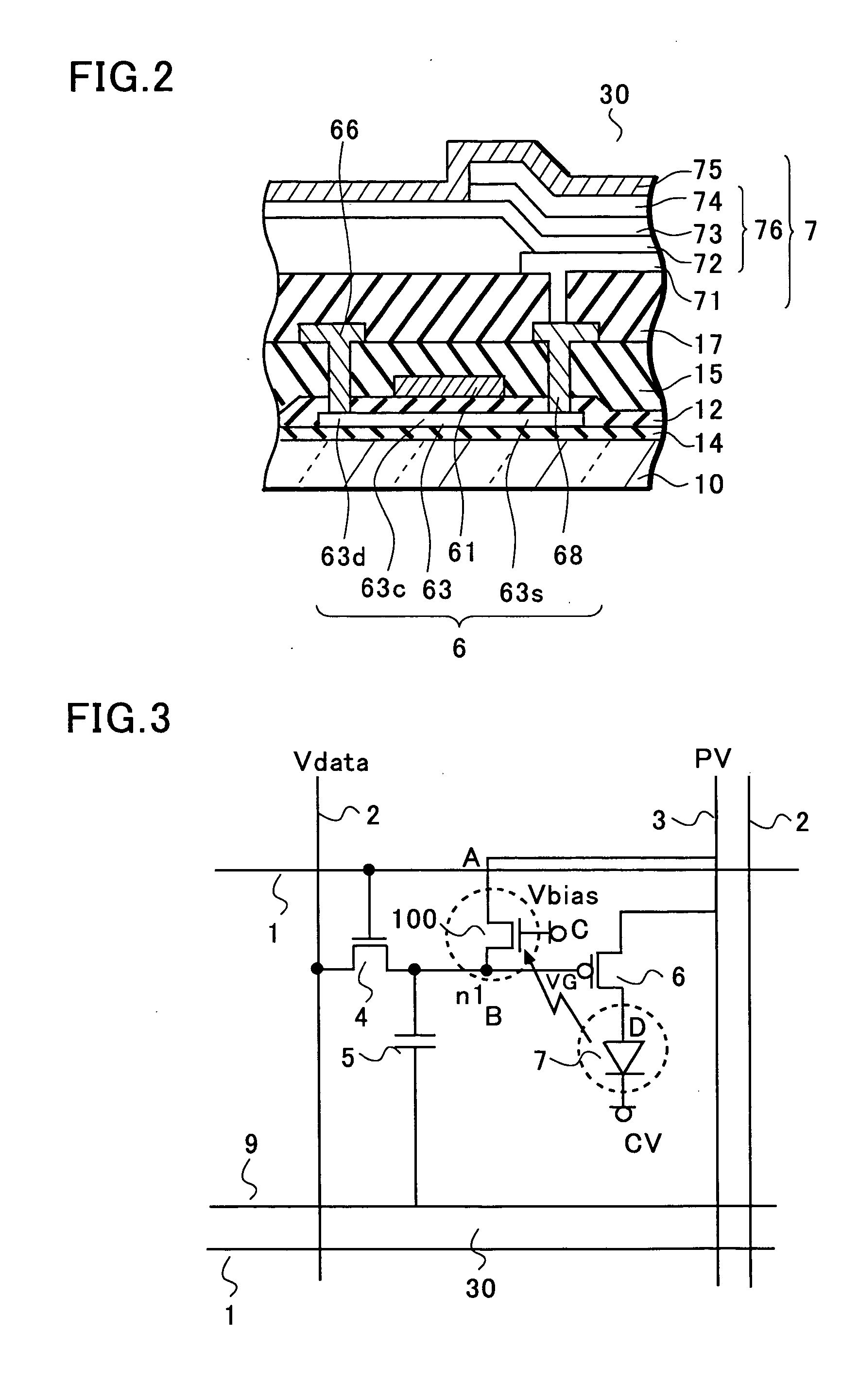Organic electroluminescent display device
- Summary
- Abstract
- Description
- Claims
- Application Information
AI Technical Summary
Benefits of technology
Problems solved by technology
Method used
Image
Examples
first embodiment
[0043] First, the present invention will be shown in FIGS. 1 to 4B.
[0044]FIG. 1 is a schematic view showing an organic EL display device. An organic EL display device 20 includes a substrate 10, drain lines 2, gate lines 1, a display unit 21, a horizontal scanning circuit 22, a vertical scanning circuit 23 and photosensors.
[0045] Furthermore, the organic EL display device 20 includes a driving integrated circuit 50. The driving integrated circuit 50 controls the display device by, for example, outputting a data signal Vdata and applying a drive voltage to a transistor which is connected to an organic EL element of the display unit 21 in order to cause the organic EL element to emit light.
[0046] The display unit 21 is formed in a manner that a plurality of light emitting pixels 30 are disposed in a matrix form on the insulating substrate 10 made of a glass plate or the like. The light emitting pixel 30 includes an EL element having a luminescence layer between an anode and a cathod...
second embodiment
[0088]FIGS. 6A and 6B show one pixel in the FIG. 6A is a circuit diagram. FIG. 6B is a plan view of a circled area shown in FIG. 6A, and terminals A, B, C and D corresponding to those in the circuit diagram of FIG. 6A is shown in FIG. 6B. A cross-sectional view taken along the Y-Y line in FIG. 6B is the same as the one in FIG. 4B. A description thereof will be thus omitted. FIG. 6B is a plan view of when viewed from a substrate 10 side.
[0089] The light emitting pixel 30 is configured to connect a photoreceptor circuit 200, which becomes a photosensor, to a light emitting circuit 180. On the substrate, a plurality of gate lines 1 extending in the row direction are disposed. A plurality of drain lines 2 and first power supply lines 3 extending in the column direction are disposed to intersect the gate lines 1. The first power supply lines 3 are connected to a power source PV. The power source PV is a power source to output a positive constant voltage, for example.
[0090] The light em...
PUM
 Login to View More
Login to View More Abstract
Description
Claims
Application Information
 Login to View More
Login to View More - R&D
- Intellectual Property
- Life Sciences
- Materials
- Tech Scout
- Unparalleled Data Quality
- Higher Quality Content
- 60% Fewer Hallucinations
Browse by: Latest US Patents, China's latest patents, Technical Efficacy Thesaurus, Application Domain, Technology Topic, Popular Technical Reports.
© 2025 PatSnap. All rights reserved.Legal|Privacy policy|Modern Slavery Act Transparency Statement|Sitemap|About US| Contact US: help@patsnap.com



